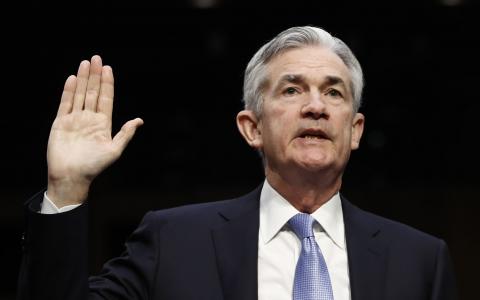
(CNN) Federal Reserve chairman Jerome Powell loves to use the word "transitory" to describe the threat of inflation. But with each passing day, it looks more and more like inflation pressures are mounting in a much more significant manner than the Fed would like.
The use of the word "transitory" could very well turn out to be transitory. Powell may need a new catchphrase to describe how inflation might be a bit stickier and thornier problem.
Wages are rising and so are bond yields. The housing market is still chugging along. The prices of many retail goods are going up, partly because of supply shortages but also because of real demand.
It is true that the US economy (especially the job market) still hasn't fully recovered from the depths of the coronavirus recession. But the Fed may be underestimating the recent rebound and the potential for sky-high inflation like in the late 1970s and early 1980s.
"The Fed is putting out the message that inflation is transitory and that there are still 8 million unemployed. The problem is that price expectations in various markets from wood to labor and company pricing strategies are running ahead of economic reality," said Sebastien Galy, senior macro strategist at Nordea Asset Management, in a report Wednesday.
"It will likely take two months for pricing strategies and wage expectations to gravitate back towards something more realistic," Galy added.
Transition from transitory?
For now, despite the volatility in the stock and bond markets, many Fed watchers still believe Powell. They think the Fed will remain cautious and not overreact to near-term inflation pressures.
According to futures contracts on the Chicago Mercantile Exchange, investors are only pricing in about an 11% chance of a rate hike by the end of the year. That's actually down slightly from what the market was expecting a month ago.
Still, there is no denying how quickly the stock market and parts of the economy have rebounded last year.
Vaccines have helped restore confidence. And as consumers go back to work and start shopping again, many of them also have government stimulus checks to spend. That may fuel temporary (we won't say transitory) inflation fears.
"We're in the vortex of a massive supply chain and demand imbalance. It's as if someone turned on the light switch and the US went back to normal," said Jennifer Foster, co-chief investment officer with Chilton Trust.
But does the Fed risk losing Wall Street credibility if Powell continues to put on blinders and stick his fingers in his ears whenever someone mentions inflation? Not necessarily.
"How much inflation actually sticks?" Foster wondered. She noted that many companies are using more automation and are spending to boost productivity. That could be an "antidote to runaway inflation."
Companies managing cost pressures for now
Even as top US companies like Walmart boost their minimum wages, which should be inflationary, there are other ways for businesses to keep a lid on prices.
"We'll navigate the supply chain challenges and inflationary pressures, whether that's in cost of goods or wages," said Walmart CEO Doug McMillon on an earnings call with investors this week. "We'll monitor our price gaps and adjust as appropriate."
Both McMillon and Walmart US president John Furner repeatedly referred to "levers" that Walmart could pull to make sure the retailer won't have to dramatically raise prices.
In other words, major American companies are going to do what they can to eat some of the rising labor and commodity costs instead of passing them on to consumers.
One market expert also pointed out that the hyper-focus on inflation could be a good thing. Investors are often spooked by problems they don't anticipate, the proverbial black swans. Inflation fears are hardly that. At this point, inflation fears are about as common as cats and dogs.
"It's great that everybody is talking about inflation. The market can't really be shocked by it anymore," said Linda Duessel, senior equity strategist at Federated Hermes.
That may be true. But investors are still grappling with worries about how long rising consumer prices and higher wages will be an issue for the Fed.
"How long is transitory? It could be anything from two months to 18. That's where it starts to get a little bit interesting," said Gautam Khanna, senior portfolio manager at Insight Investment, in a report. "This uncertainty will not sit well with investors. As such, we expect bouts of volatility."



